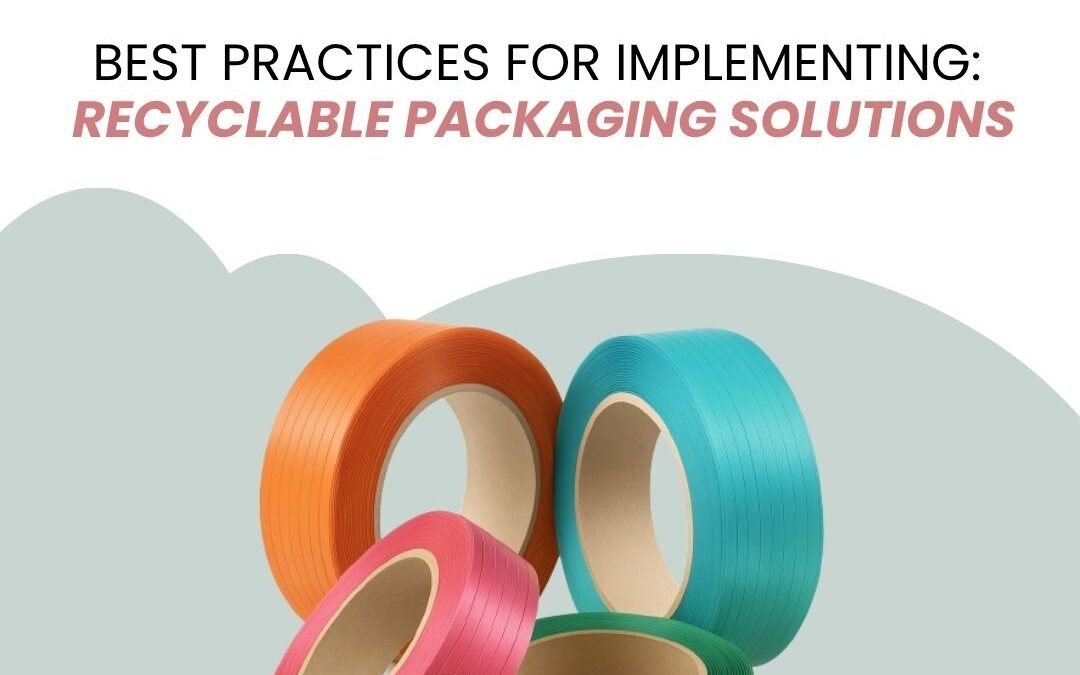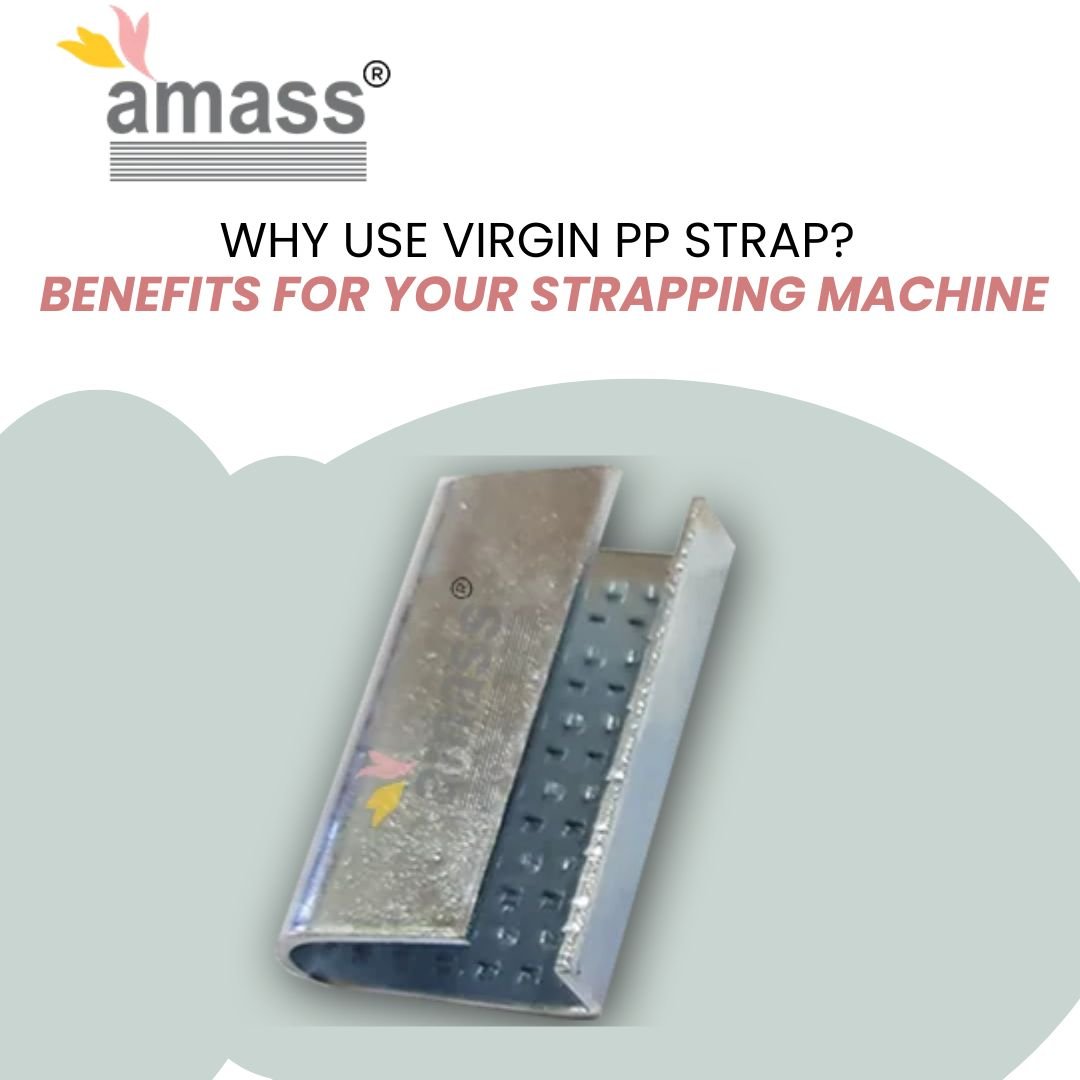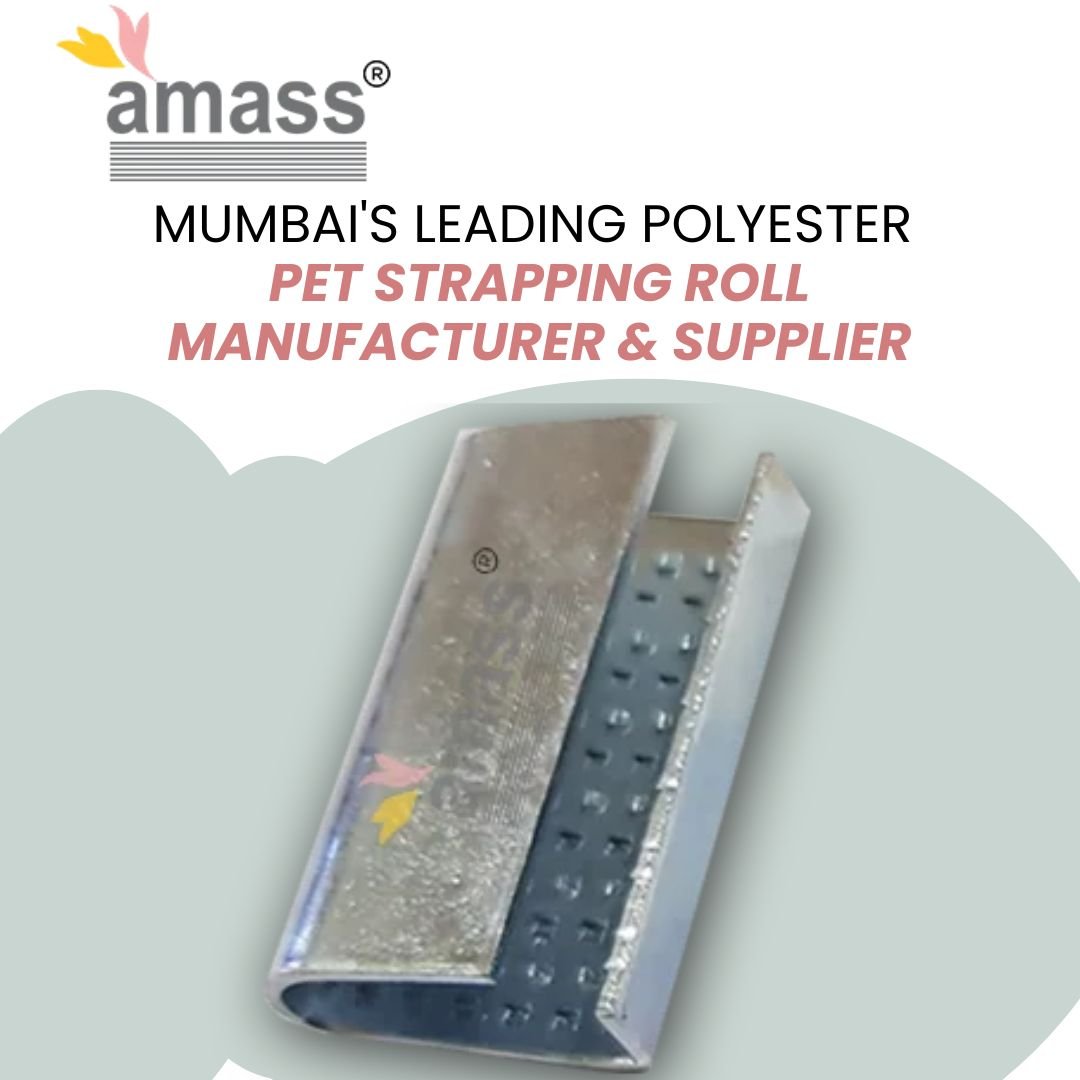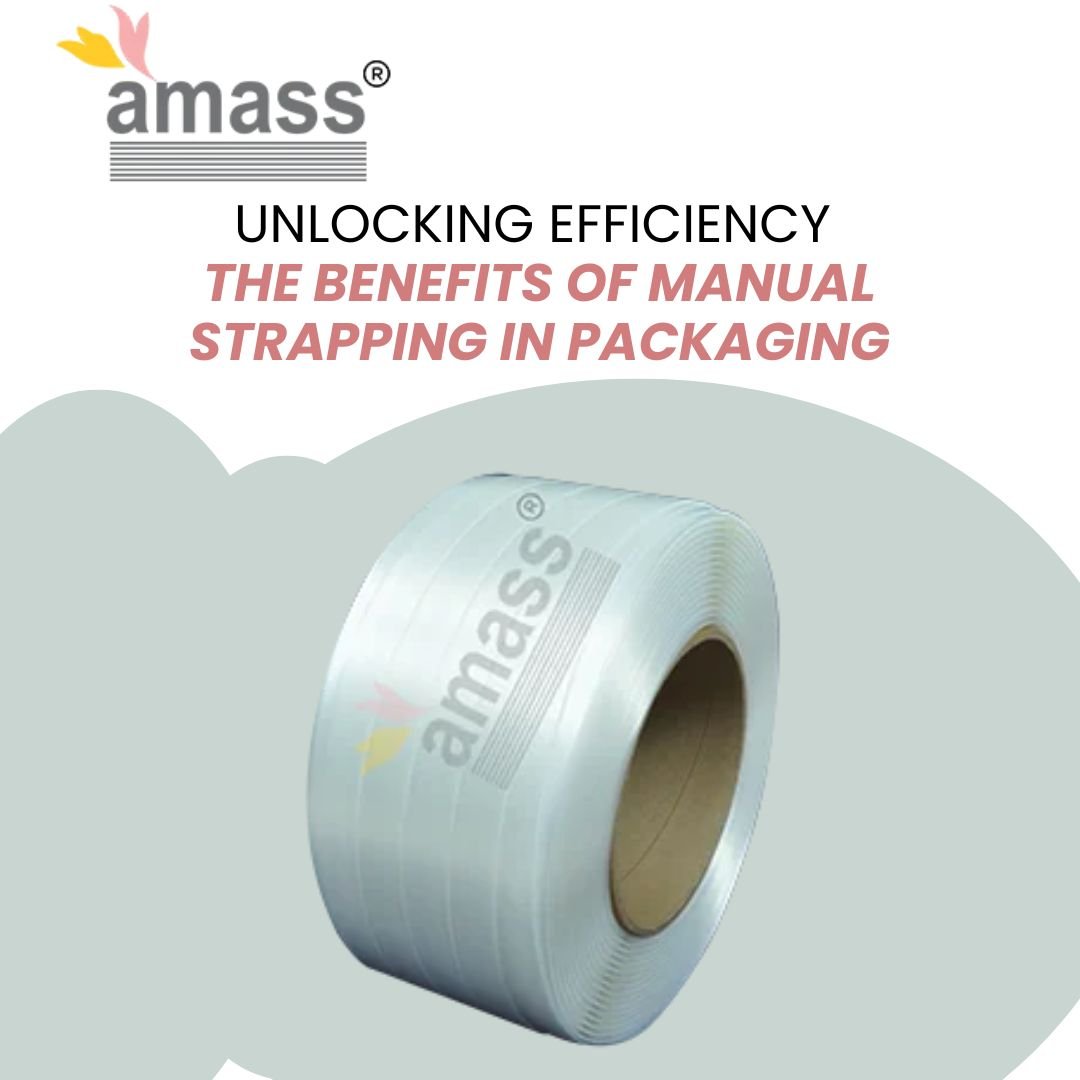Best Practices for Implementing Recyclable Packaging Solutions

Container Loading Guide: Weight Distribution & Securing Cargo
May 31, 2025
Steel Strapping Market in India: 2025 Trends and Forecasts
June 9, 2025The global packaging waste recycling market is soaring, valued at US$ 30,900.2 million in 2023 and projected to reach a staggering US$ 48,446.3 million by 2033, expanding at a CAGR of 4.6%. As businesses navigate this rapidly evolving landscape, implementing effective recyclable packaging solutions has become not just an environmental choice but a strategic business imperative. This comprehensive guide explores the best practices for successfully integrating recyclable packaging into your business operations, from material selection to consumer education, helping entrepreneurs make informed decisions that benefit both planet and profit.
Introduction: Why Recyclable Packaging Is Now a Business Imperative?
The days when sustainable packaging was merely a nice-to-have feature are long gone. With only 9% of plastic worldwide being recycled, the environmental impact of packaging waste has reached critical levels. This dismal statistic has spurred increased public scrutiny and governmental regulations aimed at mitigating the environmental footprint of packaging materials. For businesses, particularly startups and growing enterprises, adopting recyclable packaging has become essential not just for compliance but for competitive advantage.
E-commerce giants are increasingly adopting recycled packaging materials, recognizing that sustainability credentials directly impact brand loyalty. The growing consumer demand for eco-friendly solutions means businesses that fail to adapt risk being left behind in a market where environmental responsibility has become a core brand value. The question is no longer whether to implement recyclable packaging, but how to do it effectively, efficiently, and authentically.
Understanding Recyclable Packaging: Definitions, Myths, and Realities
Before diving into implementation strategies, it’s crucial to understand what “recyclable” truly means in the context of packaging. One of the most persistent myths is that all plastic packaging can be recycled. In reality, different polymers with varying compositions and characteristics require different recycling methodologies. While PET and HDPE bottles (think water bottles and milk jugs) enjoy recycling rates of 20% or more, films, bags, and other flexible items have recycling rates below 10%.
Another widespread misconception is that plastic polymers can be recycled indefinitely. Unlike glass or metal, plastic can only be recycled between 1 to 6 times, with quality degrading with each cycle as polymer chains shorten and weaken. This reality highlights the importance of considering a package’s entire lifecycle rather than simply labeling something as “recyclable.”
Perhaps the most sobering reality check: despite the technical recyclability of many materials, practical limitations often prevent actual recycling. Flexible plastic packaging, for instance, is technically recyclable but rarely processed due to its lightweight nature, food contamination issues, and tendency to clog recycling machinery. Understanding these distinctions between theoretical recyclability and practical recycling rates is essential for making truly sustainable packaging choices.
Material Matters: Choosing the Right Recyclable Substrates
High-Performance Recyclable Materials
The backbone of any recyclable packaging strategy is selecting the right materials. PET and HDPE have emerged as frontrunners in the recycling race, with established collection systems in place and wide acceptance in curbside recycling programs. These materials are easily sorted in material recycling facilities (MRFs) using automated sorters, making them practical choices for businesses seeking materials with proven recyclability.
Challenging Materials: Navigating the Complexities
For packaging that requires barrier properties or specific performance characteristics, the choices become more complex. Films and flexibles, largely made from polyethylene (PE), account for around eight metric tons per annum of untapped potential feedstock for recyclers. When considering these materials, it’s essential to evaluate not just their technical recyclability but the practical infrastructure available for their collection and processing.
Here’s an eye-opening reality: of the approximately 35 million metric tons of post-use plastics generated every year in the United States, challenging forms of plastic packaging-such as PE films, multilayered packaging, thermoforms, foams, and small rigids-represent a massive untapped resource that could serve as feedstock for recyclers but remains largely unused. This disconnect between available material and actual recycling represents both a challenge and an opportunity for innovative businesses.
Designing for Circularity: How to Make Packaging Truly Recyclable
The Ellen MacArthur Foundation has been at the forefront of promoting circular design principles through resources like their Circular Design Toolkit, which helps manufacturers minimize environmental impact, extend product life, and optimize recyclability. This toolkit emphasizes that designing for the circular economy is a journey rather than a destination-one that combines design thinking methods with a circular economy mindset.
Effective circular design focuses simultaneously on user needs and system-wide interactions. This approach can be applied across industries, from fashion to food packaging, and requires considering:
- Material selection and compatibility
- Ease of disassembly
- Minimizing mixed materials
- Clear labeling for proper disposal
- Elimination of problematic additives
The toolkit includes articles, videos, workshops, and challenges that provide practical guidance for designers looking to implement circular principles. By incorporating these resources into your design process, you can create packaging that not only fulfills its primary function but is genuinely recyclable in practice.
Integration into Production: Aligning Processes for Seamless Transition
Transitioning to recyclable packaging requires careful alignment of production processes to maintain efficiency and quality. Start by conducting a comprehensive audit of your current packaging system, identifying points where changes will have the greatest impact with minimal disruption. Often, the most successful transitions happen incrementally, allowing teams to adapt and systems to be optimized gradually.
When reformulating production lines, consider:
- Equipment compatibility – Will existing machinery work with new materials, or will modifications be necessary?
- Production speeds – How will new materials affect throughput?
- Quality control parameters – What adjustments to quality standards need to be implemented?
- Training requirements – How will staff need to be upskilled to work with new materials?
The goal is to achieve a balance where sustainability improvements don’t compromise operational excellence. This may require initial investment, but as recycled materials become industry standard, early adopters will have a significant advantage in terms of process optimization and institutional knowledge.
Supplier Collaboration: Building a Strong, Sustainable Supply Chain
Successfully implementing recyclable packaging solutions demands close collaboration with suppliers who understand both your business needs and sustainability goals. Involving suppliers early in the design process unlocks access to their expertise and insights into the latest sustainable materials.
Suppliers often have knowledge of innovative solutions, including bio-based and recycled materials, as well as cutting-edge technologies for reducing waste and carbon footprint. By establishing strategic partnerships rather than transactional relationships, you gain priority access to sustainable innovations and ensure alignment across your supply chain.
When identifying a sustainable supply chain, perform thorough evaluation to ensure suppliers align with responsible sourcing practices. Look for transparency in material sourcing, compliance with environmental standards, and willingness to collaborate on continuous improvement. Remember that your packaging is only as sustainable as its least sustainable component, making supplier selection a critical decision in your recyclable packaging journey.
Regulatory Compliance: Navigating Global Standards and Certifications
The regulatory landscape for packaging sustainability is evolving rapidly across global markets. From extended producer responsibility schemes to bans on specific materials, businesses must stay informed about current and upcoming regulations that may affect their packaging choices. Major markets like the European Union, with its Single-Use Plastics Directive, and various U.S. states with their own packaging laws create a complex compliance environment.
Key certification standards to consider include:
- Recycled content certifications (e.g., SCS Recycled Content)
- Compostability certifications (e.g., BPI, EN 13432)
- Forest management certifications (e.g., FSC, PEFC)
- Life Cycle Assessment verifications
Rather than viewing compliance as a hurdle, forward-thinking businesses see it as an opportunity to future-proof their packaging strategies and stay ahead of industry trends. Working with regulatory experts or consultants can help navigate this complex landscape while identifying opportunities for innovation.
Consumer Communication: Educating End-Users to Maximize Impact
Even the most recyclable packaging fails to deliver environmental benefits if consumers don’t understand how to properly dispose of it. Clear, consistent communication about recyclability is essential for maximizing the real-world impact of your sustainable packaging initiatives.
Follow these best practices for effective consumer education:
- Simple, standardized labeling – Use widely recognized recycling symbols and clear instructions
- Digital engagement – Leverage QR codes linking to detailed recycling information
- Storytelling – Communicate the “why” behind your packaging choices
- Feedback mechanisms – Create channels for consumers to ask questions about proper disposal
The most successful brands go beyond labeling to create emotional connection around their packaging sustainability story, turning customers into advocates for proper recycling practices.
Innovations Driving the Future of Recyclable Packaging
The packaging industry is witnessing unprecedented innovation in recyclable solutions. “Advanced recycling” technologies like pyrolysis, gasification, solvolysis, and microwave technology are complementing traditional mechanical recycling, converting previously difficult-to-recycle materials into hydrocarbons and precursor molecules that can serve as chemical feedstock.
These technologies offer promising solutions for challenging materials like multilayer flexible packaging, potentially closing significant gaps in current recycling capabilities. Additionally, developments in bio-based, biodegradable polymers derived from renewable resources present alternatives that may fit into existing recycling streams or create new end-of-life options.
The implementation of secondary sorting facilities, also called feedstock preparation facilities (FPFs), represents another significant innovation that could resolve the disconnect between available waste materials and recycler input requirements. These facilities can help extract value from materials that would otherwise be discarded, increasing overall recycling rates and creating new feedstock sources.
Measuring Success: KPIs and Metrics for Sustainable Packaging Initiatives
To effectively manage your recyclable packaging implementation, establish clear metrics that align with both business and sustainability goals. Key performance indicators might include:
- Percentage of portfolio using recyclable materials
- Recycled content incorporation rates
- Carbon footprint reduction
- Cost savings from material optimization
- Consumer engagement with recycling instructions
- Waste diversion rates
Regular measurement against these metrics enables continuous improvement and helps quantify the business value of sustainability initiatives. Many leading brands are finding that well-designed recyclable packaging solutions deliver not just environmental benefits but also cost savings through material efficiency and consumer preference advantages.
Case Studies: Brands Leading the Way with Recyclable Packaging
Examining successful implementations provides valuable insights for your own recyclable packaging journey. The Ellen MacArthur Foundation’s Circular Design Toolkit showcases case studies from businesses such as Biopak, Ahrend, and DSM-Niaga, as well as regional initiatives including New York City’s #WearNext campaign and Toronto’s Circular Economy Procurement Implementation Plan and Framework.
These examples demonstrate that successful implementation often requires cross-sector collaboration, innovative thinking, and consumer engagement. By studying these pioneers, you can identify proven strategies and avoid common pitfalls in your own implementation process.
Conclusion: Building a Greener Brand Through Smarter Packaging Solutions
Implementing recyclable packaging solutions is no longer optional for forward-thinking businesses. With the global packaging waste recycling market projected to reach US$ 48,446.3 million by 2033, sustainable packaging has become a significant opportunity for business growth and brand differentiation.
The journey begins with honest assessment of material choices and designing for true recyclability rather than theoretical claims. By collaborating closely with suppliers, integrating changes thoughtfully into production processes, staying ahead of regulations, and effectively educating consumers, businesses can create packaging solutions that deliver genuine environmental benefits while strengthening brand equity.
Remember that perfect sustainability doesn’t happen overnight-it’s an iterative process of continuous improvement. Each step toward more recyclable packaging is progress worth celebrating and communicating, building credibility with increasingly eco-conscious consumers and positioning your brand for long-term success in a circular economy.




